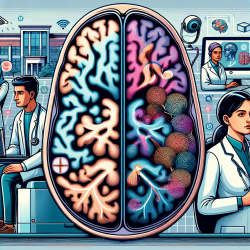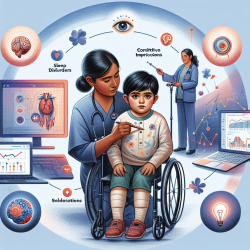Unlock the Secret to Brain Asymmetry: What Every Practitioner Needs to Know!
The human brain is a marvel of asymmetry, a feature that has intrigued scientists and practitioners alike for decades. Recent research through the ENIGMA consortium has provided groundbreaking insights into brain asymmetry, especially in relation to psychiatric disorders. This blog aims to help practitioners enhance their skills by implementing the outcomes of this research or encouraging further exploration.
Understanding Brain Asymmetry
Brain asymmetry refers to the differences in structure and function between the left and right hemispheres of the brain. It is a complex, multivariate trait that has been linked to various psychiatric disorders. The ENIGMA consortium's recent studies have shed light on how these asymmetries manifest in health and disease.
Key Findings from the ENIGMA Consortium
- Sample Size and Scope: The ENIGMA consortium's studies involved sample sizes ranging from 3,500 to 17,000 individuals, making them significantly larger than previous research efforts.
- Asymmetry in Psychiatric Disorders: The studies found that autism spectrum disorder (ASD) is associated with reduced asymmetry in cortical thickness across the cortex. Pediatric obsessive-compulsive disorder (OCD) showed altered subcortical asymmetry, while major depressive disorder did not show significant changes in asymmetry.
- Healthy Brain Asymmetry: The research mapped average asymmetry in healthy brains, revealing a fronto-occipital gradient of cortical thickness asymmetry.
- Reproducibility: ENIGMA's multi-dataset approach demonstrated the reproducibility of hemispheric differences across various datasets.
Implications for Practitioners
For practitioners, these findings offer valuable insights that can be applied in clinical settings. Understanding the nuances of brain asymmetry can enhance diagnostic accuracy and treatment planning for psychiatric disorders. Here are some ways practitioners can leverage this research:
- Enhanced Diagnostics: By recognizing patterns of asymmetry associated with specific disorders, practitioners can improve diagnostic precision.
- Personalized Treatment: Tailoring treatment plans based on individual asymmetry profiles could lead to more effective interventions.
- Continued Research: Encouraging further research into brain asymmetry can lead to new discoveries and innovations in treatment approaches.
Encouraging Further Research
The ENIGMA consortium's research is just the beginning. Practitioners are encouraged to delve deeper into the study of brain asymmetry and its implications for mental health. By staying informed and engaged with ongoing research, practitioners can contribute to the advancement of knowledge in this field.
To read the original research paper, please follow this link: Mapping brain asymmetry in health and disease through the ENIGMA consortium.










